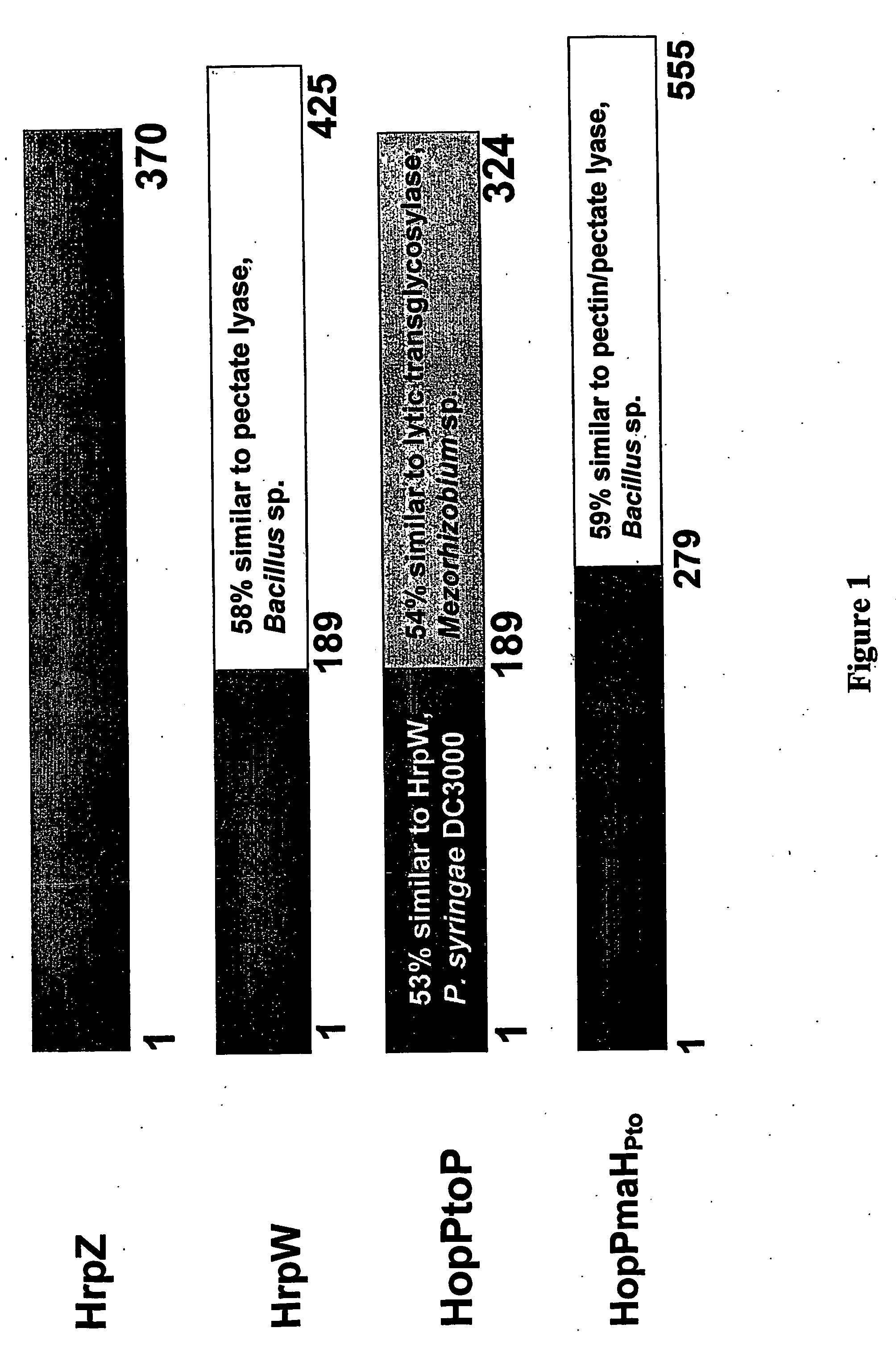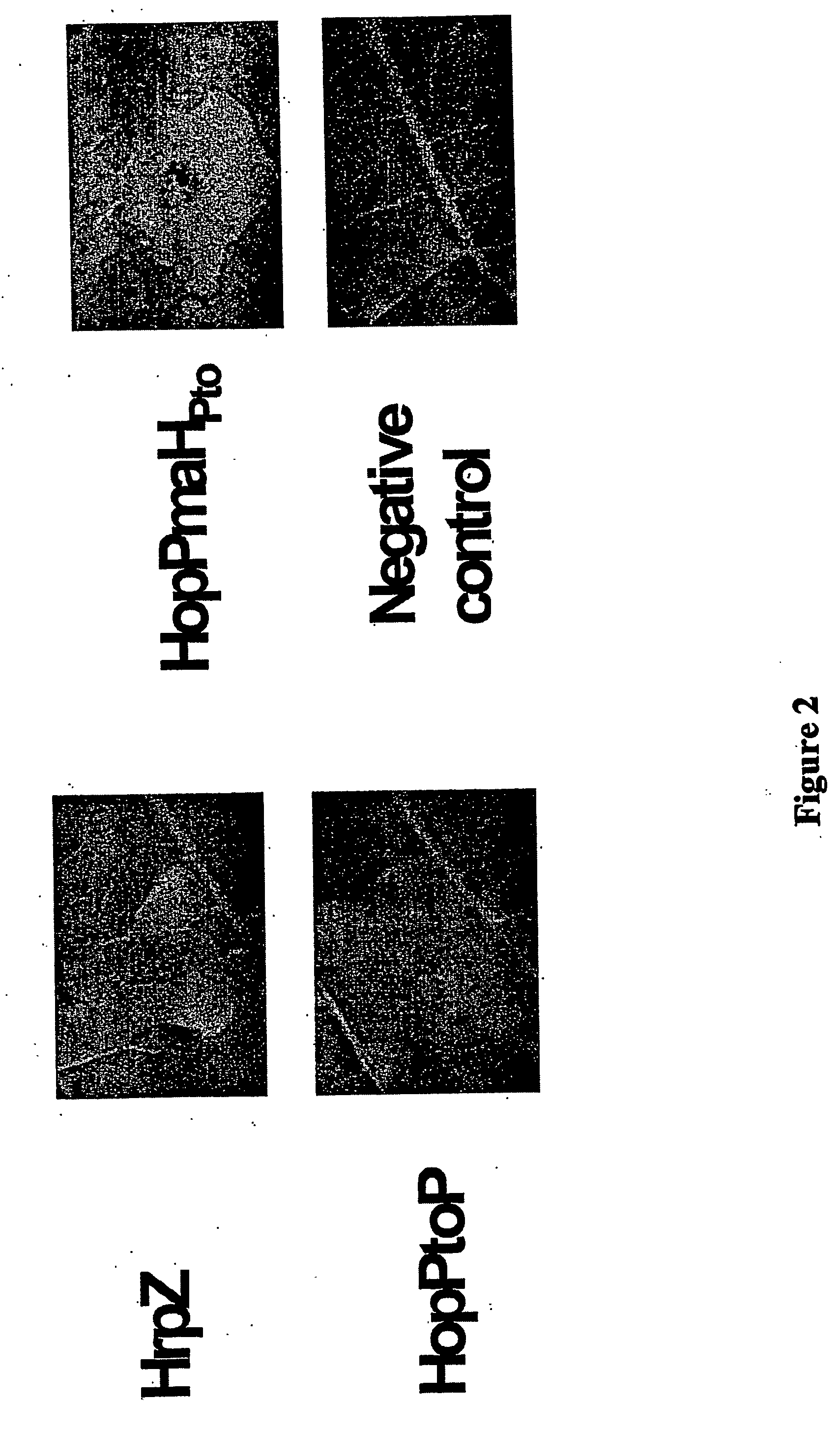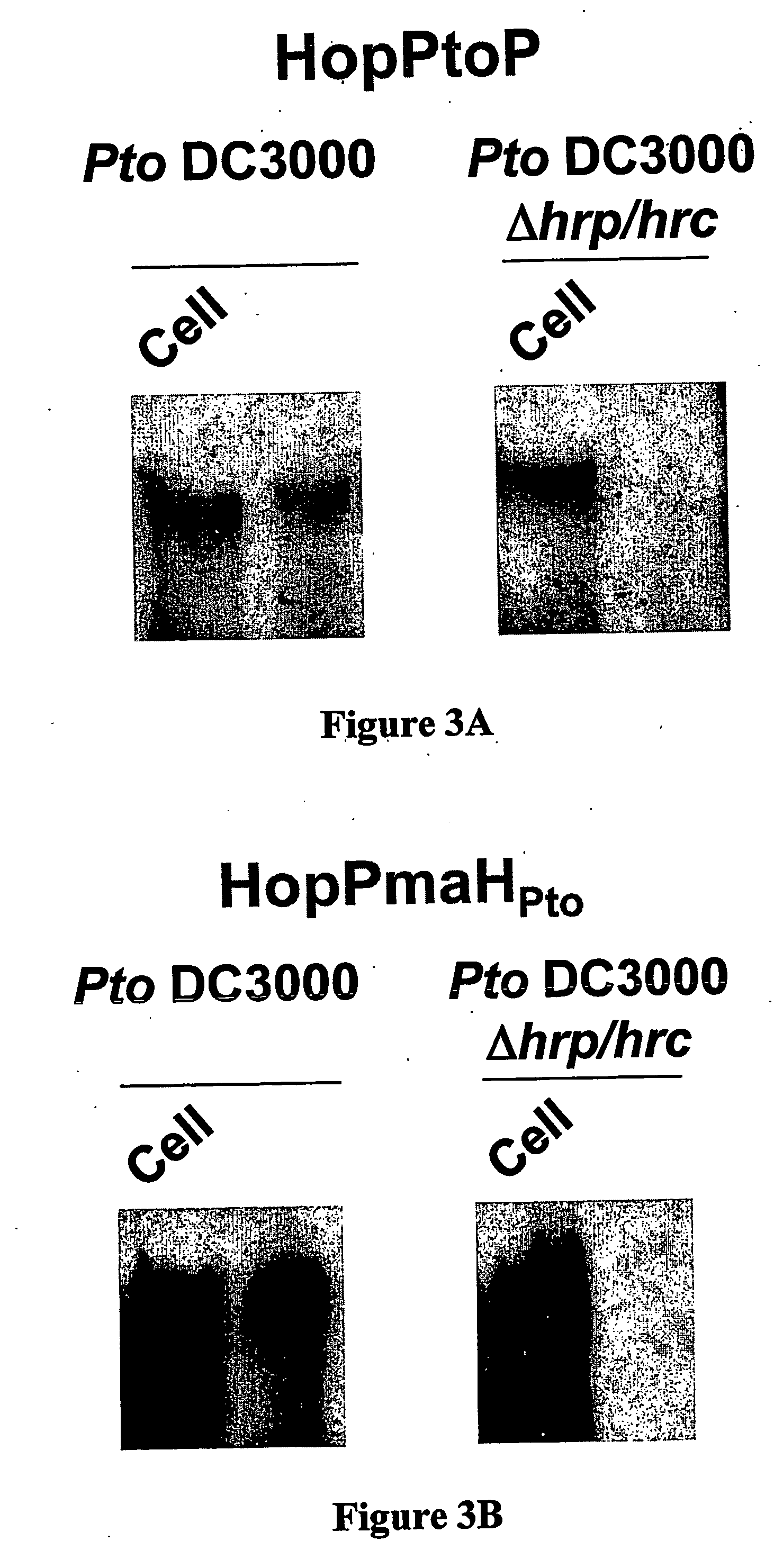Pseudomonas syringae harpins, hopptop and hoppmahpto, and their uses
a technology of pseudomonas syringae and harpins, which is applied in the field of new hypersensitive response elicitor proteins or polypeptides of pseudomonas syringae, to achieve the effects of enhancing growth, enhancing longevity of fruit or vegetable ripeness, and imparting desiccation resistan
- Summary
- Abstract
- Description
- Claims
- Application Information
AI Technical Summary
Benefits of technology
Problems solved by technology
Method used
Image
Examples
example 1
Isolation of HopPtoP and HopPmaHPto DNA Molecules and Preparation of Expression Vectors
[0093] hopPtoP was identified by using a reporter transposon to identify genes in the P. s. tomato DC3000 genome that were induced in a HrpL-dependent manner (Fouts et al., Proc. Natl. Acad. Sci. USA 99(4):2275-2280 (2002) and supplemental materials available online, which are hereby incorporated by reference in their entirety). hopPmaHPto was identified by the bioinformatic approach of scanning the DC3000 genome with a Hidden Markov Model for Hrp promoter sequences (Fouts et al., Proc. Natl. Acad. Sci. USA 99(4):2275-2280 (2002) and supplemental materials available online, which are hereby incorporated by reference in their entirety). The HrpL-dependent expression of hopPmaHPto was then confirmed by microarray analysis.
[0094] The following primers were used to amplify hopPtoP and hopPmaHPto from P. syringae pv. tomato DC3000 genomic DNA using standard PCR protocols:
[0095] hopPtoP Forward Prime...
example 2
Topical Application of the HopPtoP and HopPmaHPto to Plants and HR Activity Thereof
[0102] Purified protein preparations prepared in accordance with Example 1 above were used to infiltrate HopPtoP or HopPmaHPto onto plant tissues. Purified HrpZ was similarly prepared. HrpZ, HopPtoP, and HopPmaHPto were purified using a 6×His tag system, and denatured at 100° C. for 10 minutes. Proteins were then infiltrated into Nicotiana tabacum cv. xanthi, and the hypersensitive response was photographed at 24 hours (Alfano et al., Mol. Microbiol. 19:715-728 (1996), which is hereby incorporated by reference in its entirety). As shown in FIG. 2, like HrpZ, which is known to elicit a hypersensitive response in tobacco plant tissues, HopPtoP and HopPmaHPto elicit a similar hypersensitive response, while no such response could be detected from the negative control.
example 3
HopPtoP and HopPmaHPto Proteins are Secreted in Culture
[0103] pENTR / SD / D-TOPO®:: hopPtoP and pENTR / SD / D-TOPO®:: hopPmaHPto were used to clone into pCPP3234, an IPTG-inducible “Gateway-ized” vector created in the lab by cloning Gateway Reading Frame B fragment into SmaI site of pCPP3214. pCPP3214 has a cyaa construct for gene fusions in broad host range vector pVLT35 (de Lorenzo et al., Gene 123:17-24 (1993), which is hereby incorporated by reference in its entirety) and was constructed by digesting pMJH20 with SacI and HindIII, and ligating this fragment to pVLT35 cut with the same enzymes. This fused the adenylate cyclase (cyaA) gene to the C-terminal ends of hopPtoP and hopPmaHPto, which provided an eptiope for detection of protein in the cell and supernatant fractions during the secretion assays. The resulting plasmids, pCPP3256 (HopPtoP-CyaA) and pCPP3255 (HopPmaHPto-CyaA), were then transformed into P. syringae DC3000 and CUCPB5114 (P. syringae DC3000 without the hrp / hrc clust...
PUM
| Property | Measurement | Unit |
|---|---|---|
| temperature | aaaaa | aaaaa |
| molecular mass | aaaaa | aaaaa |
| molecular mass | aaaaa | aaaaa |
Abstract
Description
Claims
Application Information
 Login to View More
Login to View More - R&D
- Intellectual Property
- Life Sciences
- Materials
- Tech Scout
- Unparalleled Data Quality
- Higher Quality Content
- 60% Fewer Hallucinations
Browse by: Latest US Patents, China's latest patents, Technical Efficacy Thesaurus, Application Domain, Technology Topic, Popular Technical Reports.
© 2025 PatSnap. All rights reserved.Legal|Privacy policy|Modern Slavery Act Transparency Statement|Sitemap|About US| Contact US: help@patsnap.com



